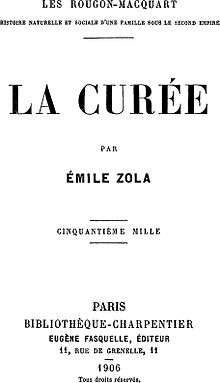
The Kill
"The Kill" (written "The Kill (Bury Me)" on the single and music video) is a song by American band Thirty Seconds to Mars, the song was released as the second single from their second album, A Beautiful Lie.
The cover art of the single depicts a Venus flytrap.
Overview
Jared Leto described the meaning of the song as, "It's really about a relationship with yourself. It's about confronting your fear and confronting the truth about who you are." He has also said it is about "confrontation as a crossroads" — coming face-to-face with who you really are.
In September 2007, "The Kill" was re-released again in the UK. It was also available as a Compact Disc with a A Beautiful Lie poster and two stickers, and a special limited edition 7" vinyl version. The song is played in 6/8 time.
Two alternate versions of the songs exist: the "Rebirth" version, which adds in orchestral accompaniment and has no screaming, and an acoustic version featuring Brazilian singer Pitty that was only released in Brazil. On May 2, 2010, the band performed the song live with Chino Moreno from Deftones.
The Kill (disambiguation)
The Kill may refer to:
See also

La Curée
La Curée (1871–72; English: The Kill) is the 2nd novel in Émile Zola's 20-volume series Les Rougon-Macquart. It deals with property speculation and the lives of the extremely wealthy Nouveau riche of the Second French Empire, against the backdrop of Baron Haussmann's reconstruction of Paris in the 1850s and 1860s.
Vastly different from its predecessor and prequel La Fortune des Rougon, La Curée, the portion of the game thrown to the dogs after a hunt, usually translated as The Kill - is a character study of three personalities: Aristide Rougon (renamed "Saccard")--the youngest son of the ruthless and calculating peasant Pierre Rougon and the bourgeois Félicité (by whom he is much spoiled), both of them Bonapartistes and consumed by a desire for wealth, Aristide's young second wife Renée (his first dying not long after their move from provincial Plassans to Paris) and Maxime, Aristide's foppish son from his first marriage.
Plot summary
The book opens with scenes of astonishing opulence, beginning with Renée and Maxime lazing in a luxurious horse-drawn carriage, very slowly leaving a Parisian park (the Bois de Boulogne) in the 19th century-equivalent of a traffic jam. It is made clear very early on that these are staggeringly wealthy characters not subject to the cares faced by the public; they arrive at their mansion and spend hours being dressed by their servants prior to hosting a banquet attended by some of the richest people in Paris. There seems to be almost no continuity between this scene and the end of the previous novel, until the second chapter begins and Zola reveals that this opulent scene takes place almost fourteen years later. Zola then rewinds time to pick up the story practically minutes after La Fortune des Rougon ended.
Podcasts:

-
by Galactic Cowboys
Kill Floor
by: Galactic CowboysMan has got to work to eat, and this is what I do 5 days a week
I'm at this place from 9 to 5, I get a salary for taking life
They send 'em in, I send 'em out
My hammer carries a lot of clout
Blood doesn't bother me no more
They put me on the kill floor, workin' on the kill floor!
Death has become a way of life, I see the bills and hear my nagging wife
I spend my day inflicting pain, this kind of job could drive a man insane
Don't feel compassion anymore, they put me on the kill floor
There's nothing to do when I check out, so me and my hammer go house to house
